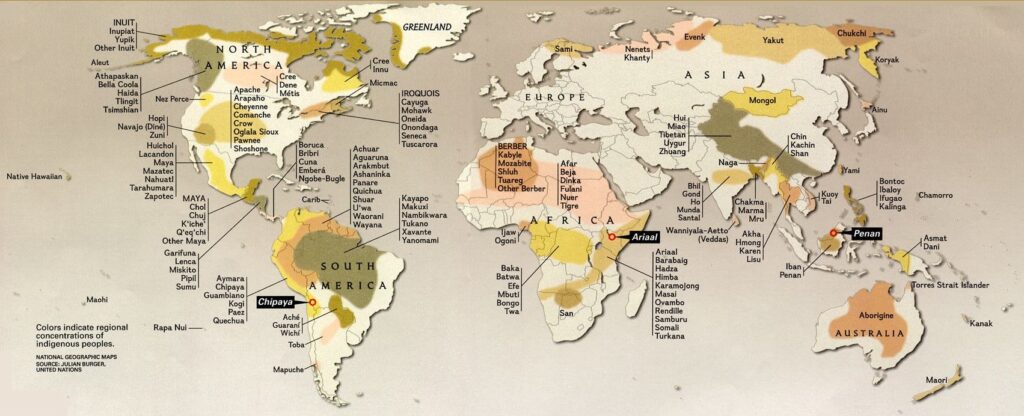While working on a story about the Sámi people for our latest magazine Down to earth, we realised that we did not yet have a comprehensive editorial policy for how to write about and work with Indigenous Peoples. Here’s a list of 10 of our take-aways about how to work towards allyship to Indigenous communities, both as editors, and as people.
- Write in an active tense. Passive language is often used by historians, politicians and writers. But it obfuscates rather than clarifies. When we write that “Indigenous land rights were not recognised,” we fail to specify the “who,” “what,” “where” and “when.” These things did not just “happen”; people or other forces made them happen.
- Use the present tense if possible. Stop saying “Indigenous people believed…” when it’s not grounded in a historical time period. Indigenous beliefs are not mere relics of the past.
- Amplify Indigenous voices on issues both related to their cultures and beyond. They are activists, business owners, teachers, nurses and experts with personal interests and knowledge.
- Mind your words. Don’t use the word “powwow” when you plan your office meetings. You didn’t truly find your “spirit name” at a summer camp and you don’t have a “spirit animal”. Painting stripes on your face doesn’t make it “war paint.” Going camping with your pals in the nearest national park isn’t a “vision quest.” Your close friends aren’t your “tribe.”
- Ask—and don’t correct—the way people choose to identify. Indigenous, Nordic, Finnish, Native American, American Indian, Torres Strait Islander, Aboriginal, Indigenous Australian or solely the names of their specific community, nation or tribe—it’s not our choice.
- Find local storytellers to report on their communities or illustrate these stories. Don’t support writers, brands or artists that profit off of Indigenous cultures and traditions. Instead, support Indigenous creatives.
- Diversify what you read, listen to, and watch. This playlist contains contemporary Indigenous music, and multiple streaming services have a variety of Indigenous-made series and movies.
- Recognise the accountability of Europe in the destruction of Indigenous cultures. The U.S., the Republic of Mexico, Australia and Canada didn’t exist yet at a time when the land’s Indigenous people were first bribed, killed, imprisoned or cheated out of their land. The sense of superiority that allowed this to happen was imported from countries such as the Netherlands, England, Spain, Portugal and France. Stop referring to early Europeans as “pilgrims”. They were settlers and colonisers.
- Do not dictate, talk over, or suppress Indigenous voices during an important dialogue on rights and challenges. Don’t make assumptions. Ask questions when welcomed. Be a good listener—put your ego aside.
- Understand that not all Indigenous people agree on all subjects, and address that “Indigenous culture” is not a singular concept that can be applied to all people who consider themselves Indigenous. Each and every community, nation or tribe has their own customs and ways.


